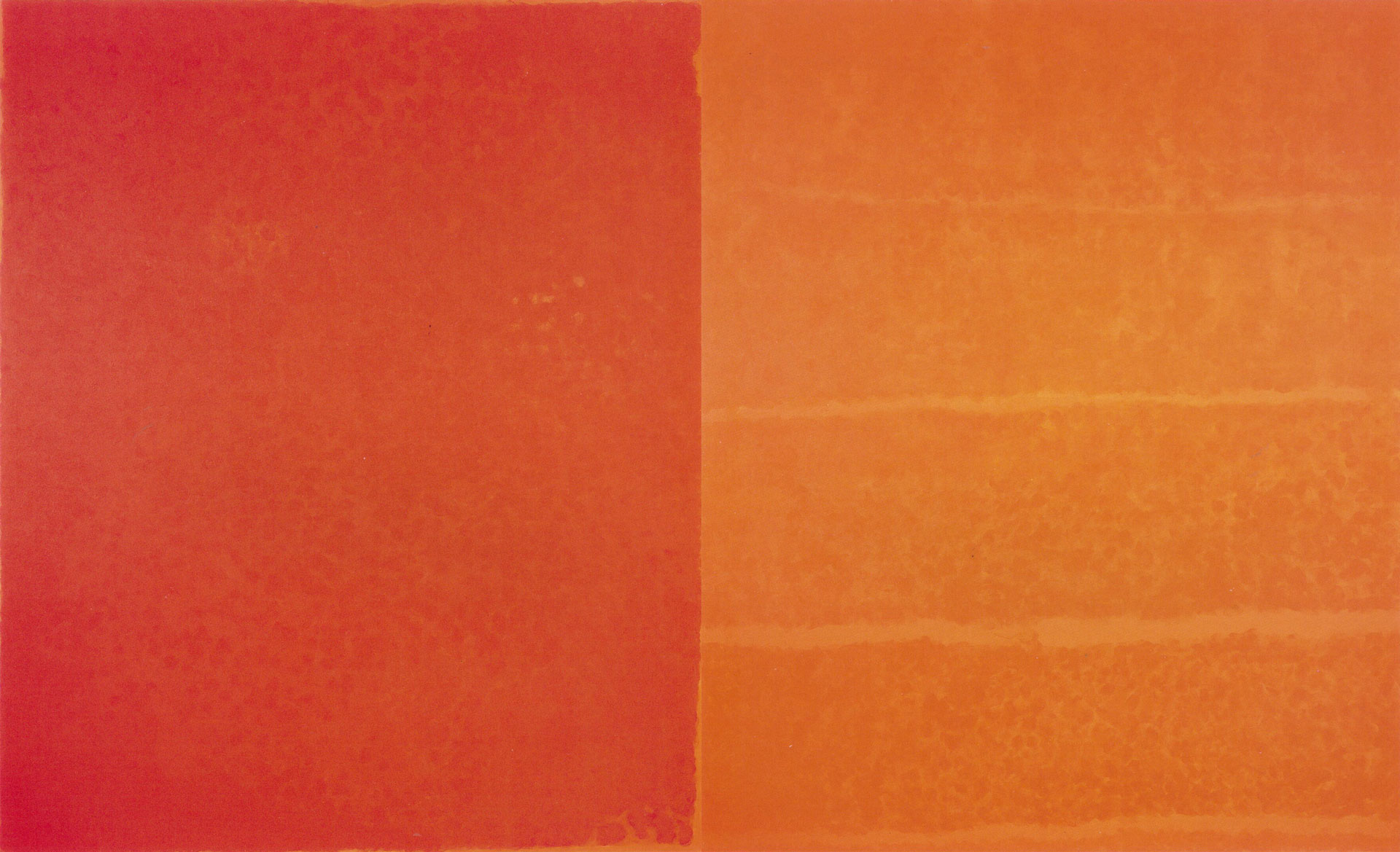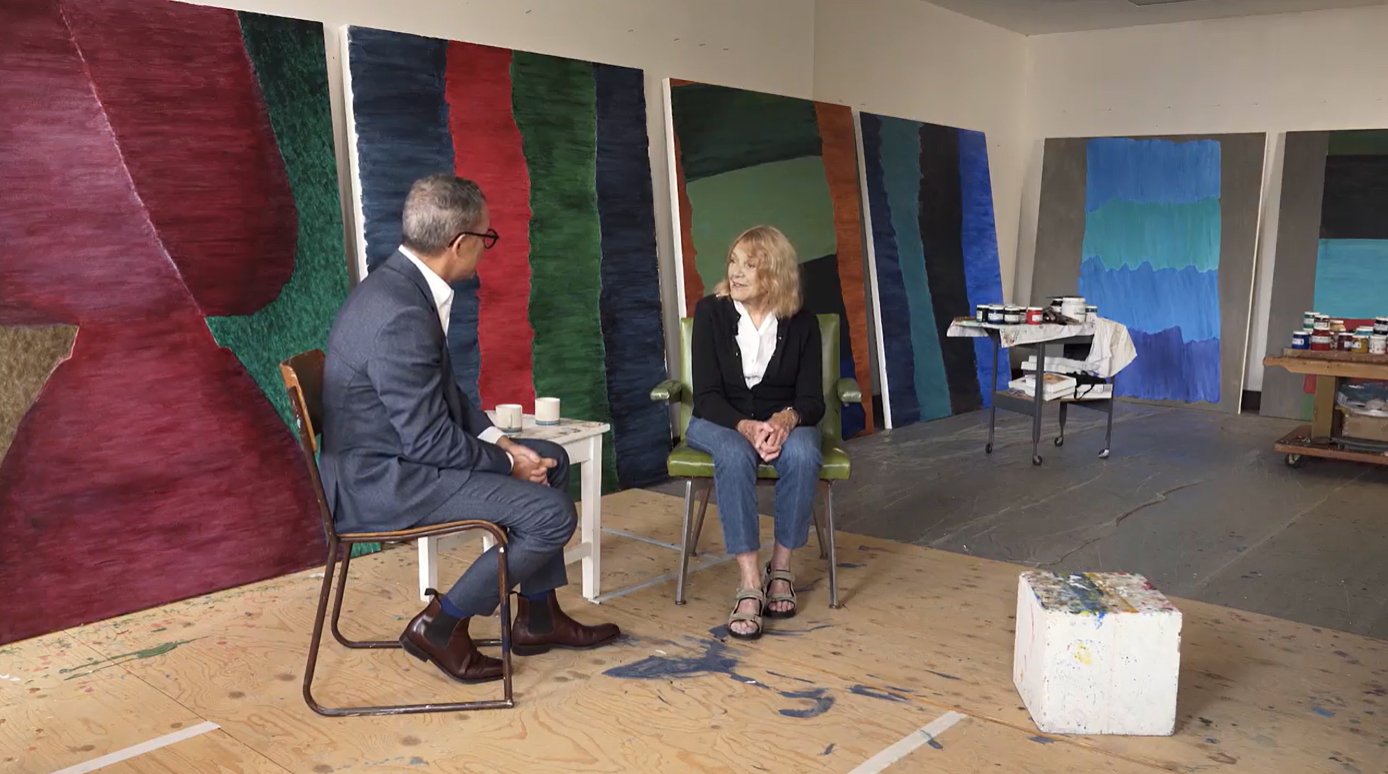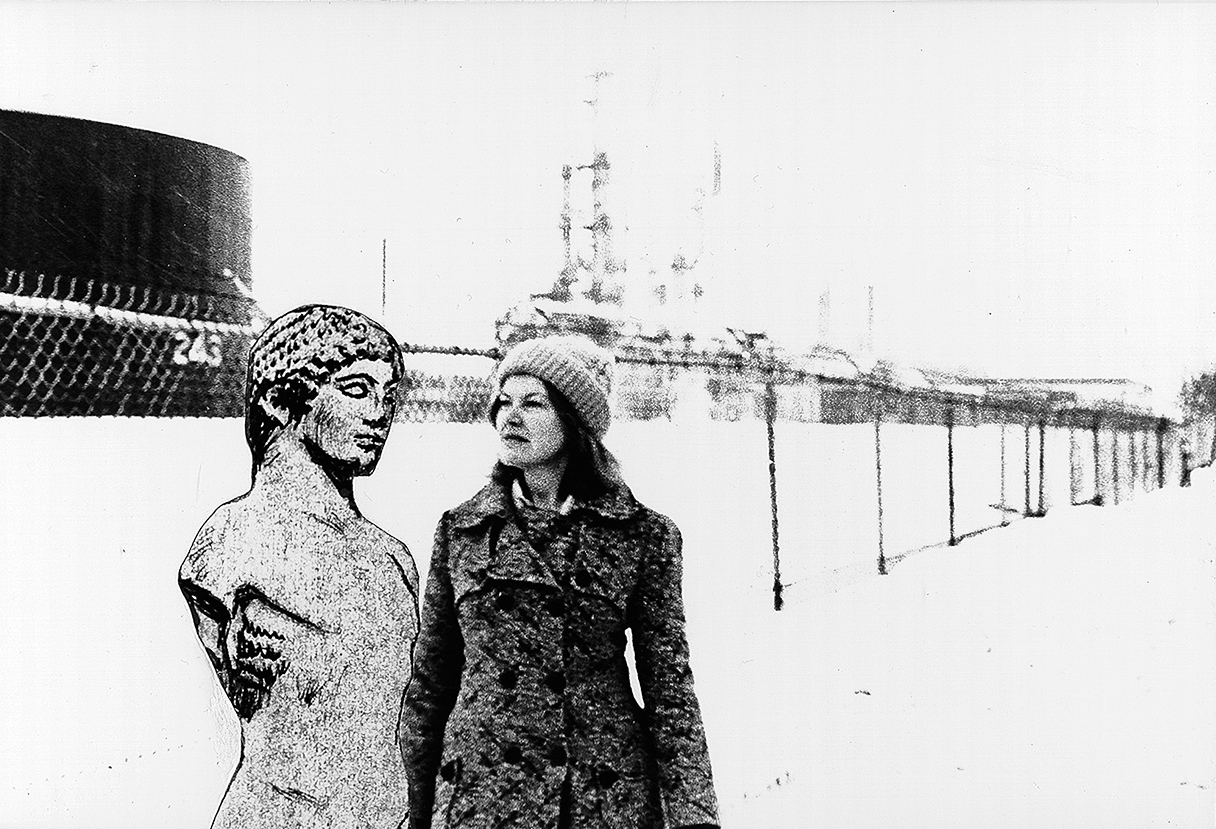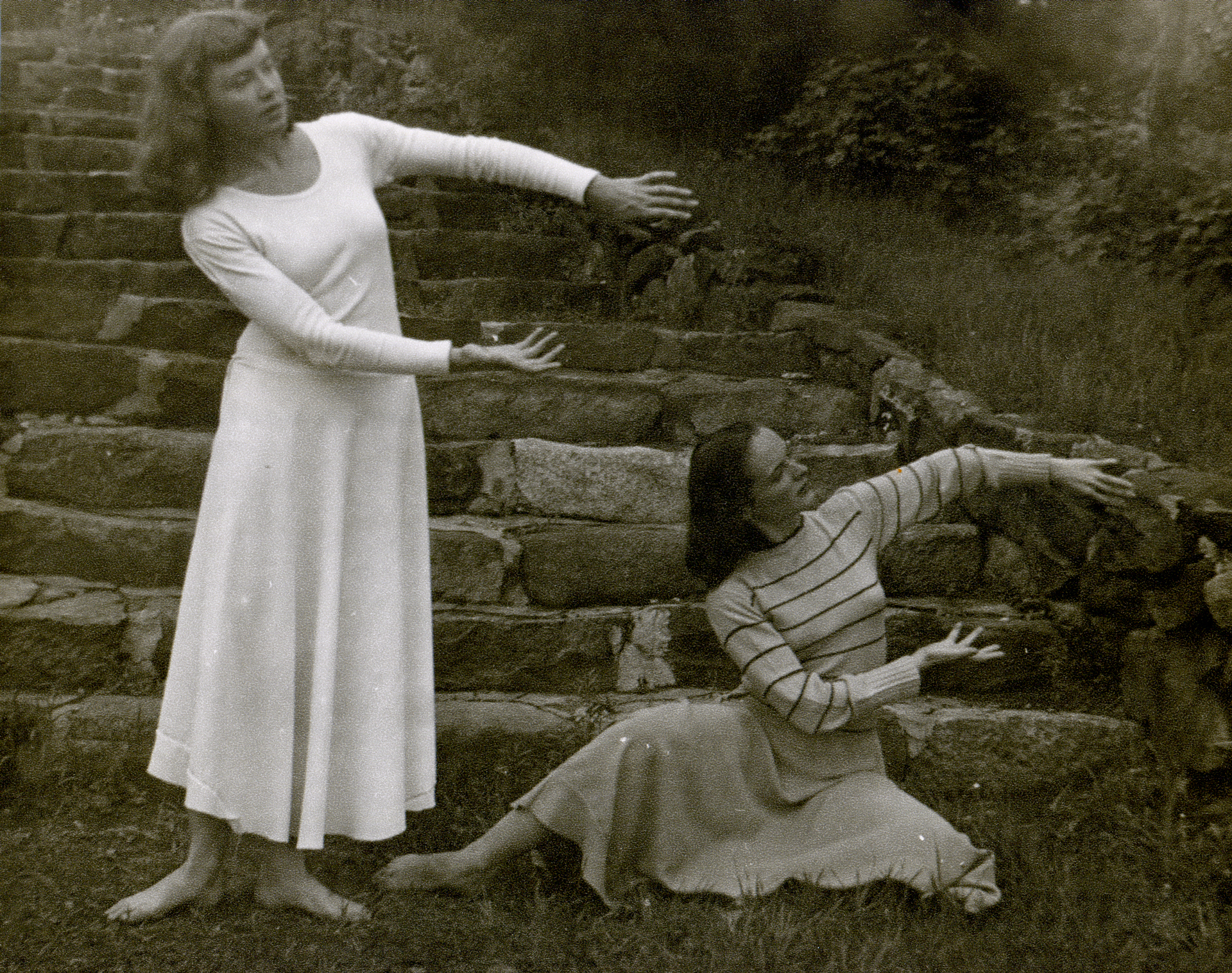Interview with Françoise Sullivan

Françoise Sullivan. Photo Clara Houeix
Painter, sculptor and pioneer of Canadian modern dance, Françoise Sullivan celebrated her 100th birthday this year. From November 1, 2023, to February 18, 2024, she is presenting a selection of her recent large-scale paintings at the MMFA, in which she continues her exploration of the timeless themes of movement and light. These works are set in dialogue with pastels, paintings, photographs and sculptures from the Museum’s collection. MMFA Director and co-curator of the exhibition Stéphane Aquin has maintained a close connection with this outstanding artist for many years. He recently met with her in her studio to talk about her vast career and her inspirations for this new exhibition.

Stéphane Aquin

Emmanuelle Christen
Born in Montreal in 1923, Françoise Sullivan has had a major influence on the history of art through her contribution to Canadian modern dance and her signing of the manifesto Refus global in 1948 as a member of the Automatistes, alongside Paul-Émile Borduas. She was also a pioneer in Quebec for her exceptional ability to switch from one discipline to another, be it from painting to performance, or from sculpture to photography. This penchant for daring and exploring continues to manifest today in her unwavering production in studio: every day, this artist of 100 years shows up in front of her canvases, curious to see where the gestures, rhythms, colours and forms will lead her.
Can you talk to me about your studio work? You live on the same street and come here almost every day. Do you set to work right away, or do you first spend some time in contemplation or looking at the canvases?
Usually, I just start working.
Right away. You get right to it and let the painting dictate where you go?
Yes. Some works I’ve done and redone several times before I’m satisfied with them… but it’s a gradual process, almost like a stream.
Tell us about the titles of these works.
The titles came to me later, not right away. I was reflecting on the summer we had, the torrential rains, terrible… the forest fires, the clouds that kept coming and going and coming back again…
and I remembered one particularly severe storm. I was in the country. It was the middle of the night, and I was in bed, and I could see the lightning through the skylights in my studio. To be honest with you, when I woke up the next morning, I was happy to still be alive!
So, they came to me, titles like “Annunciator of the Moons”; “Oceans and Mountains!”; “Your Lightning Dazzles Me”; “Under a Volcano’s Fumes, A Breath Hanging”…
It’s pure literature! Each of these titles evokes a richly poetic world. Almost surreal. And together, they read like a poem…
Coming back to the exhibition, which is soon to open at the Museum, what would you like people to take away from the experience?
That they will read the short text accompanying each work and try to find meaning in it. And maybe they won’t find any… But I hope they will think about how each painting was made.
The exhibition features the work Homage to Paterson, a painting that was exhibited 20 years ago in your retrospective at the MMFA. Can you tell us about this monumental work?
I wanted to make a really large painting, by hand, on my own, without anyone’s help. I had a ladder, but it wasn’t tall enough to reach every corner. So, I ended up having to ask my son Francis to come help me. We had to take down the canvas, turn it around and remount it several times, so that I could work from the ground.
 Françoise Sullivan (born in 1923), Hommage à Paterson [Homage to Paterson], 2003, acrylic on canvas (diptych), 348 x 574 cm. Collection of the artist. © Françoise Sullivan / CARCC 2023. Photo Guy L’Heureux
Françoise Sullivan (born in 1923), Hommage à Paterson [Homage to Paterson], 2003, acrylic on canvas (diptych), 348 x 574 cm. Collection of the artist. © Françoise Sullivan / CARCC 2023. Photo Guy L’Heureux
You wanted to complete this work alone, when you were already 80 years old…
Yes! I was in great shape!
And you still are! Why did you want this work – Homage to Paterson – to be in this new exhibition? Do you see it as a seminal piece, somewhat of a landmark in your creation?
I think so. And it’s in two parts that are put together. One part is very unified, while the other is sort of divided into four sections. And then it occurred to me: “That represents my sons.”
The four sons you had with Paterson Ewen, who was your husband… So, this work is of great personal importance to you…
Yes. And that was the year he died.
So, both the work and date are important. A true landmark. But since then, you haven’t stopped working. How does it feel to come back to the Museum after 20 years and present your recent work?
It’s marvellous! The fact that you thought of me for a new exhibition after having been the curator of my retrospective 20 years ago. It’s very moving, in a good way.
 Stéphane Aquin, Director of the MMFA, and Françoise Sullivan
Stéphane Aquin, Director of the MMFA, and Françoise Sullivan
I’m really touched to hear you say that. Of course, what this exhibition is celebrating is not so much the whole or the immensity of your career – almost 80 years of work, that’s phenomenal – but your vitality now, the creativity that keeps coming from you. It’s this capacity to launch yourself into the unknown with each canvas, at 100 years of age… Most people would have been content to just pick one area, but with you, it’s this never-ending creation, every day. It’s truly admirable. To you, maybe, it’s just living, but to us on the outside, we know it’s phenomenal!
There’s also a large sculpture in the exhibition. Can you tell us about it?
When I started sculpting, there were very few really big works being produced. The biggest one I made was the one that was commissioned for Expo 67, but in general I was working at the human scale. Now, there are monumental sculptures almost everywhere. So, I wanted to see what one of my earlier sculptures would look like in an enlarged version.
The original was a small sculpture made from Plexiglas. But the new one is in metal and coloured.
Yes, we’ll see how it turns out! I think it’ll be good, though. I’m happy with it.
This is the first time you’ve ever done that, right? Revisit a work from 50 years ago and redo it?
Yes, and maybe there will be others!
In the exhibition, in the small gallery adjoining the Contemporary Art Square, we’re showing some of your works that are now a part of our collection. There’s Dance in the Snow, from 1948, Walk between the Musée d’art contemporain and the Montreal Museum of Fine Arts – 32 photographs you took as you walked from one museum to the other – but also a diptych painting and a small work from the Creton Cycle, not to mention Encounter with Archaic Apollo. We can see some deep ties to classical antiquity in your work. You lived in Greece, and then you came across an Apollo in the streets of Montreal…
Yes! And in the snow!
 Françoise Sullivan (born in 1923), Encounter with Archaic Apollon, 1974, montage of 13 gelatin silver prints, collage, 15.5 x 415 cm. MMFA, gift of Françoise Sullivan. © Françoise Sullivan / CARCC 2023
Françoise Sullivan (born in 1923), Encounter with Archaic Apollon, 1974, montage of 13 gelatin silver prints, collage, 15.5 x 415 cm. MMFA, gift of Françoise Sullivan. © Françoise Sullivan / CARCC 2023
It must have been tough to return to Montreal after Greece… But there is this classical underpinning in your work, as revolutionary as it is, with all its novelty and daring spirit. Would you agree?
Yes, I would.
Is this a legacy of your education? Did you frequent the MMFA as a child?
Yes, and on my first trip to New York, my aunts, who worked there, took me to the MoMA. That was in 1939…
Speaking of which, it was in New York that you took classes with Franziska Boas, right?
Yes. Her relationship to dance was fed by new ideas. She was very politicized. She had a large collection of objects from all over the world to make music with. So, we would improvise with these instruments as a group.
What do you think are the challenges that today’s artists face in their careers that you didn’t experience at 20 or 30 years old? Do you think it’s a different world for artists now?
It was more difficult for artists to get their start. In our group, we didn’t wait for the galleries to open their doors to us… it wasn’t going to happen. So, several of my friends – Ms. Gauvreau, for example, and Muriel Guilbault, the great actress of the day – occasionally lent their homes for two or three weeks so that the Automatiste artists could exhibit their works.
There were no bursaries for artists at the time, either.
No, not for artists like us!
And the market was not as developed as it is today…
No. But there were two exhibitions that took place thanks to Ms. Gauvreau. During the war, she founded the Women’s Voluntary Reserve Corps. And then, it came to an end at a certain point, and the space she’d used as headquarters became free. The Automatistes came across it and asked permission to set up their paintings there. One day, a taxi driver came in. He started looking at the works and asked, “How much is this one?” And he bought it. He has since amassed a collection of paintings from that era. He didn’t have much formal education, but he had an amazing eye for art, and he became a friend of the Automatistes!
Incredible!
Yes! When I came back from New York in June 1946, I sensed that something big was happening in the group, and I decided to stay in Montreal. I started looking for a dance space, because I had begun to create a choreographic work at Franziska Boas’s school. It was called “Duality”. I wanted to work on my choreography and teach modern dance. I finally found a space on Peel Street, in a house with a big yard. It was the perfect place to create dances and host students. It didn’t cost a thing… And then, one day, I felt I was ready to mount a show. I’d always put on pretend performances as a child. It came naturally to me.
 Duality, 1944. Choreography by Françoise Sullivan performed by Françoise Sullivan and Jeanne Renaud. Dance Collection Danse. Photo A. Renaud
Duality, 1944. Choreography by Françoise Sullivan performed by Françoise Sullivan and Jeanne Renaud. Dance Collection Danse. Photo A. Renaud
I needed a partner for “Duality”, because it’s a dance for two. I thought about Jeanne Renaud, who was in New York at the time. She was surprised but interested. She talked it over with her sister Louise and finally said yes. When the young people in the group – in particular, Jean-Paul Mousseau – learned that we were preparing a show, they wanted to be part of it. Mousseau bought yards and yards of jute, because it was the cheapest fabric. He made a stage and even a backstage. It was wonderful. Maurice Perron took care of the lighting. Jean Paul Riopelle was responsible for the control room, or something like that. We had music by Pierre Mercure, which he actually performed. Françoise Riopelle made me a costume… We had extraordinary help. And everyone who read the student newspaper showed up. The place was packed.
It’s crazy to think about that era, with all those people at your sides… all those artists who were so influential themselves.
And we had so much fun!
So, that was the past. And what about the present? I’m curious to know what projects you’re working on now.
Just simply continuing! At my age, I think to continue is enough.
Françoise Sullivan: “I let rhythms flow”
November 1, 2023 – February 18, 2024
Credits and curatorial team
An exhibition organized by the Montreal Museum of Fine Arts. This exhibition is curated by Stéphane Aquin, Director of the MMFA, and Florence-Agathe Dubé-Moreau, guest curator.
Its presentation was made possible by Hydro-Québec, in collaboration with the Heffel Foundation. The Museum wishes to thank the donors to the MMFA Foundation’s Philanthropic Circles, and to underscore the contribution of its media partner La Presse.
This exhibition was funded in part by the Canada Council for the Arts, the Conseil des arts de Montréal and the Government of Quebec.


